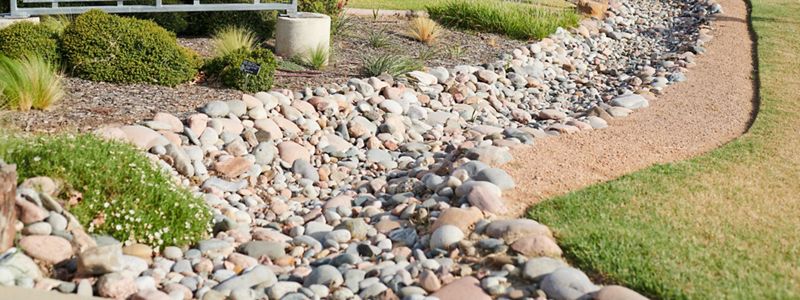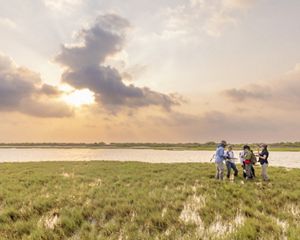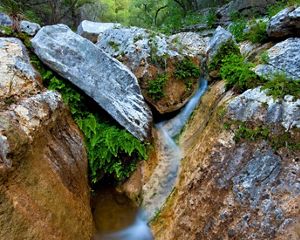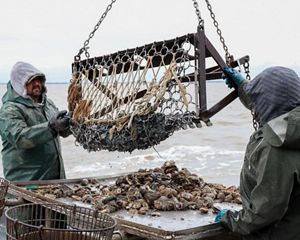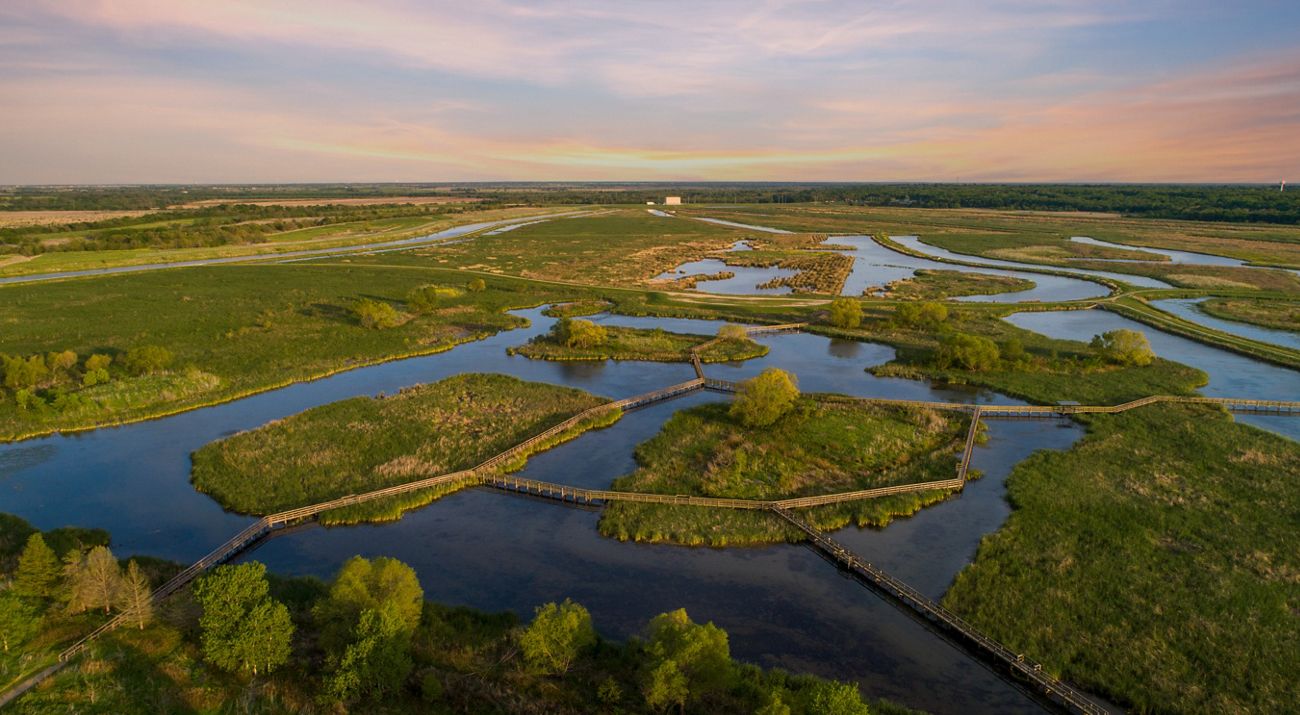
See What Nature’s Developing
Nature-based solutions offer Texans cleaner water and air, protection from extreme weather events and access to parks and open spaces for improved mental and physical health.
Defining Nature-based Solutions:
Nature-based solutions use or imitate natural features and processes to address community challenges, such as flooding, drought, water and air quality and urban heat islands, while providing additional benefits to people and the environment.
Twenty-five miles southeast of Dallas, a boardwalk meanders over a lush, sprawling wetland. Patches of southern cattail, their velvety hotdog-on-a-stick seedpods swaying in the breeze, mix with plants like American wild celery, whose flexible green blades undulate in the water. Fish slap the water’s surface, and insects buzz. Stick around long enough and you might spot a river otter, too.
But the beauty of the East Fork Water Reuse Project at the John Bunker Sands Wetland Center, the largest man-made wetland in the United States, tells just part of the story.
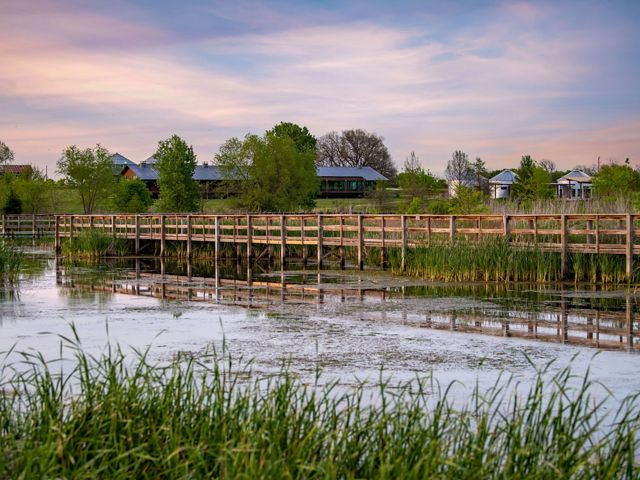
Nature-Based Solutions in Action
The 1,840-acre man-made wetland acts as a cost-effective alternative to an expensive water treatment facility. Aquatic plants and sunlight naturally filter water from the Trinity River, removing sediment, heavy metals and nitrogen. The water is then piped back to Lavon Lake and ultimately becomes drinking water for 10 North Texas counties.
This is one example of how we can harness the power of nature to provide many benefits for communities across the Lone Star State.
Challenges and Opportunities
Texas has the highest annual growth rate in the country. That population pressure has triggered increased land fragmentation and the conversion of our open spaces. About 3.7 million net acres of working land, including nearly 1.8 million in the last five years alone, were converted to non-agricultural uses between 1997 and 2022, according to the Texas A&M Natural Resources Institute Land Trends Report. Most of that change has occurred around urban centers.
Cities and stormwater drainage networks can’t keep up with the growing population and changing rainfall patterns. As a result, traditional infrastructure designed for smaller populations is struggling to manage the increased demand. But nature offers many solutions that could help alleviate these strains.
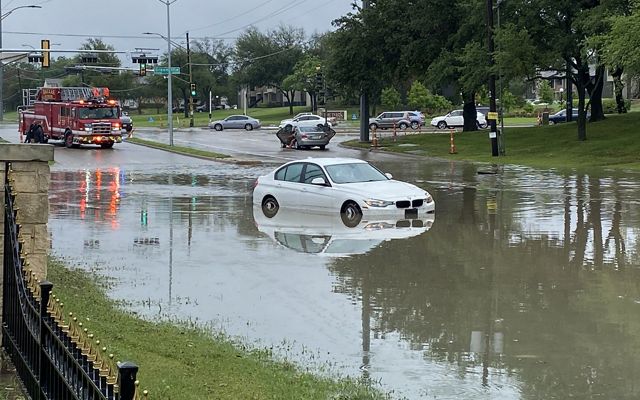
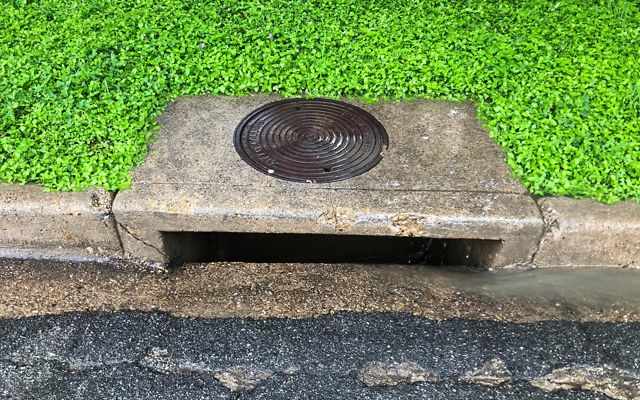
Weathering Texas Storms
Every spring, flash floods rip across parts of Texas, flushing water down creeks and rivers and sometimes flooding urban areas. Powerful storms wallop the coast during hurricane season, inundating communities. The problem is only expected to worsen, with flooding events in cities projected to become 30% to 50% more frequent by 2036.
Protecting and restoring natural systems like wetlands or river corridors and incorporating ideas from the way nature functions into our urban landscape can help lessen the impact of those weather events. Shifting the way cities manage water by incorporating nature-based solutions, such as bioretention areas and rainwater gardens, in our infrastructure and development decisions can slow runoff and help prevent stormwater from becoming dangerous floodwater.
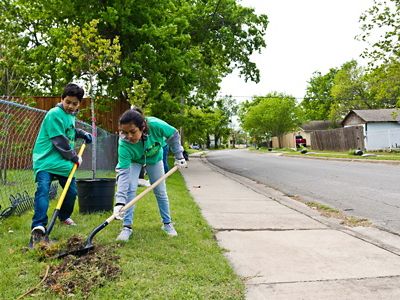
Keeping Water Clean and Flowing
Many of the same nature-based solutions that help build flood resilience also improve water quality and can support our critical water supplies. For example, runoff from a typical parking lot at a strip mall can be directed into a vegetated rain garden, where native plants filter out pollutants and slow the flow of water. By the time the water reaches a creek or drainage ditch, many contaminants have been removed, and the slower flow helps reduce erosion and sedimentation—key to maintaining water reservoir capacity. Further, by using native plants that are adapted to our climate, meaning they are more resilient to drought and less water-intensive than non-native species, we can reduce the need for irrigation, leaving more water in streams and rivers.
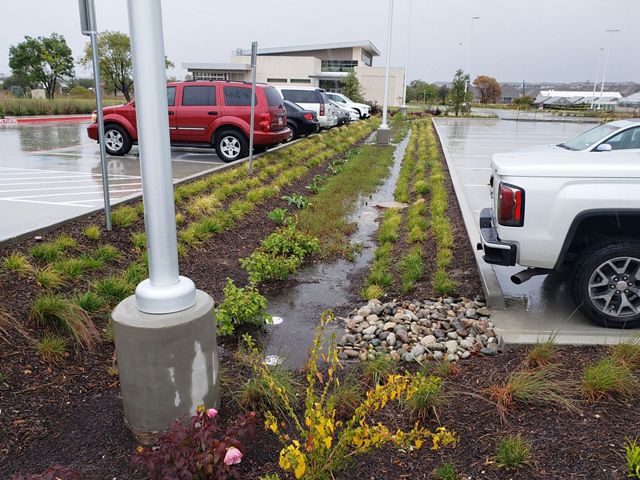
Groundwater's Role at the Surface
Groundwater is often an important source of water for our rivers, creeks and streams. Although the contribution of groundwater to total streamflow varies widely, hydrologists estimate the average contribution is between 40% and 50% in small and medium-sized streams.
Cities like San Antonio and Austin are leading the way by using nature to capture and filter water while allowing the Edwards Aquifer to recharge. By protecting natural areas over the aquifer, they’re not only improving water quality but also slowing runoff, giving water more time to soak into the ground. This helps refill underground water supplies, which sustain our creeks and rivers and keep them flowing, especially during dry periods or times of drought. In contrast, traditional gray infrastructure is designed to move water—and its sediment and pollutants—out of the system as quickly as possible, often preventing any beneficial use of that water.
Coping with Heat
Nature-based solutions can also help cities cope with heat. Trees and vegetation lower surface and air temperatures by providing shade and removing heat. This can help reduce peak summer temperatures by 2–9°F and also help reduce utility bills throughout a community. Businesses can create green roofs by planting them with vegetation watered by repurposed air conditioning condensation to help cool a building and reduce cooling costs. Vegetated areas along roadways offer a similar opportunity to address urban heat.
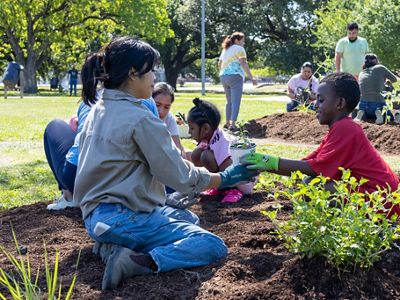
There are opportunities to cool entire neighborhoods by increasing vegetation and shade along streets, as demonstrated by the Gulfton community in Houston, identified as one of Harris County’s hottest neighborhoods in the 2024 Houston-Harris County Heat Watch Campaign.
Along the Coast
Along Texas’ Gulf Coast, living shorelines can be created using natural materials like oysters, sand and plants. They protect shorelines, providing a barrier that slows erosion and damage from waves and storm surge. At the same time, they provide habitat for fish and other marine creatures, which can provide a boost to recreational and commercial fishermen. These natural elements can make a bigger impact than traditional “gray” infrastructure alone by addressing multiple challenges at once.
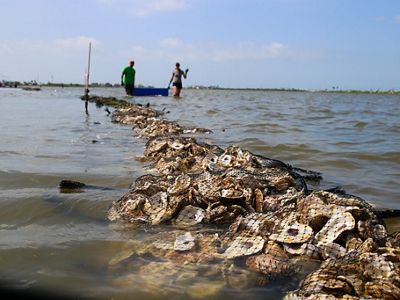
At Home
Even individual Texans can help make a difference by using nature-based solutions at home. Using permeable materials, like pavers, gravel or rocks in place of concrete or asphalt for sidewalks, driveways and parking areas, allows water to soak in rather than run off and contribute to flooding. Native, drought-tolerant plants can provide shade, while rain barrels capture water that might otherwise run off. Additionally, native landscaping and rain gardens can replace water-thirsty lawns, supporting bees, hummingbirds and other wildlife important to local natural areas.
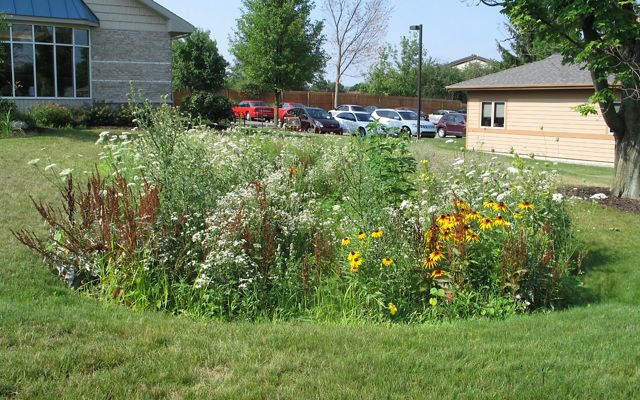
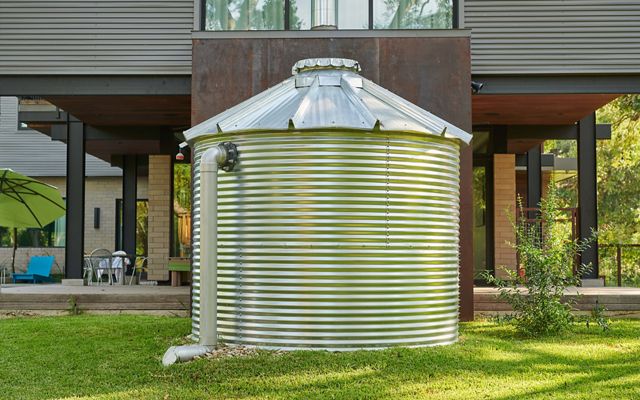
A Shift in Thinking
While nature-based solutions may not work in every situation, they should be considered alongside more traditional options. In fact, hybrid solutions that incorporate both traditional engineering and natural systems can often work best. However, to make this approach more mainstream, nature-based solutions must become the design standard of choice for public and private development.

Today, nature remains a cost-effective, long-term solution to help meet the state’s growing needs for clean water and air, access to green space and safe community development. And in Texas, where natural beauty is a source of state pride, our natural infrastructure also preserves our unique character while creating a more sustainable future for all Texans.
Learn More About Natural Solutions
-
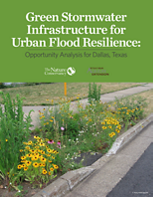 Green Stormwater Infrastructure for Urban Flood Resilience
Green Stormwater Infrastructure for Urban Flood ResilienceThis opportunity analysis explores where green stormwater infrastructure can most effectively enhance urban flood resilience in Dallas, TX
Download
We Can’t Save Nature Without You
Sign up to receive monthly conservation news and updates from Texas. Get a preview of Texas' Nature News email.
